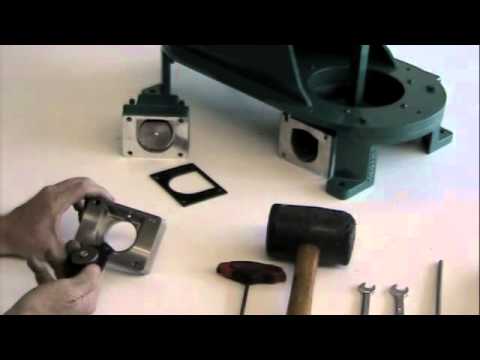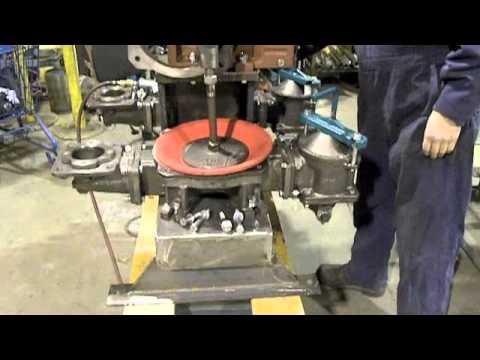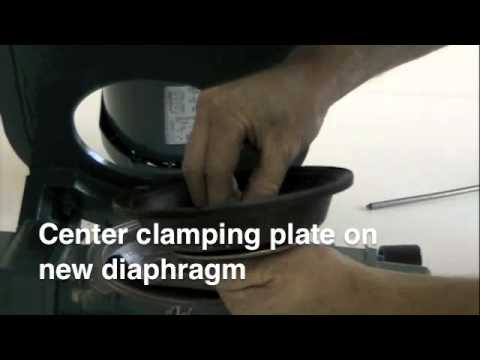Maintenance: Operating Instructions
The First Steps
- Place your pump on a firm, level foundation above the source of liquid. This is necessary in order to check proper valve operation and pump performance
- Leave sufficient space around the pump for future servicing Best pump operation is achieved by locating the pump as close as possible to the liquid source
- Important! Consult your owners manual for your specific Mud Sucker model's priming capabilities
- Do not exceed static discharge head abilities of the pumping unit. Contact your Mud Sucker dealer for detailed information or our technical support help-line at 1-888-829-2783 (US and Canada) or +1-201-445-2882 worldwide
Starting Your Diaphragm Pump
- Follow the motor or engine manufacturer's instructions carefully that shipped with your pump
- The pump gear box, engine crankcase, and engine gear box are filled to the proper level at the factory. However, check oil levels before starting
- Your diaphragm pump has been designed to prime itself in a few minutes
- High suction lifts will require additional time and will reduce the performance of the pump
- In order to facilitate priming at high suction lifts, it may be advantageous to stop the pump after a few minutes of operation and fill the pump body with liquid
- To do this, remove the discharge ball valve and cover and then start the pump. Should you have difficulty, refer to the trouble shooting section
Using Your Pump
- Under normal conditions at sea level, your Mud Sucker diaphragm pump is capable of handling water up to a 20 ft. suction lift
- Your pump will operate best with some pressure on the discharge side
- If operating with the discharge below the pump, the discharge hose can be carried over a barrel or sawhorse
- Should the pulsating effect of the pump become objectionable, it may be that air chambers are required
- If your pump was supplied with air chambers it may be that the air chambers have become waterlogged
- Drain the excess liquid from the chambers. Tighten all plugs securely after draining
Pump Hose Connections
- Connections at the easily accessible suction port should be made with strongly reinforced suction hose (see genuine Wastecorp Mud Sucker hoses)
- This type of hose will not collapse during operation
- Collapsible hose may be used on the discharge side
- New hose washers should be used at the couplings to prevent trouble-causing air leaks.
- All hoses should be independently supported to eliminate excessive strain on the pump
- Make sure that the hose does not rest on sharp edges of boards or stones.
Pump Piping
- All piping, especially the suction line, should be as short as possible with the fewest elbows to reduce friction loss
- Installations with long pipe lines or when handling hot liquids, require expansion and contraction relief provisions and adequate support to eliminate severe strains on the pump
- Suction and discharge hose should be of the nominal pipe size of the pump connections
- It is important that suction piping should continuously rise to the pump to avoid air pockets
- Gate valves should not be used on the discharge side for flow control
- Capacity may be altered by pump speed (engine and variable speed drives only)
Pump Strainer Advisable
- Protect your Mud-Sucker investment; use a strainer.
- Strainers are attached to the suction line to prevent stones and foreign debris from clogging the pump
- A large overall straining area is necessary and should be kept clear of debris.
- Keep the strainer from working into the sediment by suspending it from a rope.
- If you do not have a strainer, your Wastecorp Mud Sucker diaphragm pump dealer can supply one in the correct size
Pump Controls
- When there is little liquid to pump, the motor speed may be reduced if your pump is equipped with a variable speed drive; or V belt drive ratio to be altered.
- If your pump is engine driven, throttle down the engine on shallow lifts or where full power is not required for efficient pumping
- It is recommended that the pump operate between 48 and 60 strokes per minute for efficient lubrication and cooling of the engine
 Learn how to change the flapper valves on a Mud Sucker 2FA Series watch video
Learn how to change the flapper valves on a Mud Sucker 2FA Series watch video  See the correct way to change a diaphragm on a Mud Sucker 2FA Series watch video
See the correct way to change a diaphragm on a Mud Sucker 2FA Series watch video  Professional diaphragm pump maintenance is easy for your B Series pump watch video
Professional diaphragm pump maintenance is easy for your B Series pump watch video